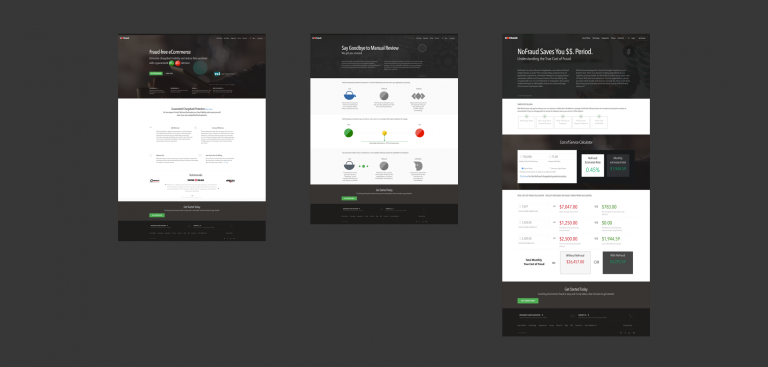Are we at the Big Data tipping point?
The Big Data space is warming up – to the point that various experts by now perceive it as the over-hyped successor to cloud. The publicity might be a bit much, however Big Data is by now living up to its prospective, changing whole business lines, such as marketing, pharmaceutical research, and cyber-security. As a business gains experience with concrete kinds of information, certain issues tend to fade, however there will on every relevant occasion be another brand-new information source with the same unknowns awaiting in the wings. The key to success is to start small. It’s a lower-risk way to see what Big Data may do for your firm and to test your businesses’ preparedness to employ it.
In nearly all corporations, Big Data programs get their start once an executive becomes persuaded that the corporation is missing out on opportunities in data. Perhaps it’s the CMO looking to glean brand-new perceptiveness into consumer conduct from web data, for example. That conviction leads to a comprehensive and laborious procedure by which the CMOs group could work with the CIOs group to state the exact insights to be pursued and the related systematic computational analysis of data or statistics to get them.
Big Data: Find traffic bottlenecks?
The worth of Big Data for network traffic and flow analysis is in the capacity to see across all networks, applications and users to comprehend in what way IT assets, and in particular net-work bandwidth, is being dispersed and devoured. There are several tools with which customers can finally see precisely whoever is doing what on the net-work, down to the concrete application or smartphone in use. With this real-time perceptiveness, associated with prolonged term use history, clients can spot tendencies and outliers, identifying wherever performance difficulties are starting and why.
Big Data has swished into any industry and at the moment plays an essential part in productivity development and contention competition. Research indicates that the digital cluster of data, data processing power and connectivity is ripe to shake up many segments over the next 10 years.
Big Data: What type of work and qualifications?
Big Data’s artificial intelligence applications of tools and methods may be applied in various areas. For example, Google’s search and advertisement business and its new robot automobiles, which have navigated 1000s of miles of California roads, both employ a package of artificial intelligence schemes. Both are daunting Big Data challenges, parsing huge amounts of information and making decisions without delay.
A Big Data specialist should master the different components of a Hadoop ecosystem like Hadoop 2.7, Yarn, MapReduce, Pig, Hive, Impala, HBase, Sqoop, Flume, and Apache Spark. They should also get hands-on practice on CloudLabs by implementing real life programs in the areas of banking, electronic communication telecommunication, social media, insurance, and e-commerce.

Image: Erik Underwood/TechRepublic
How can the value of Big Data be defined?
The Big Data wave is altogether about detecting hidden worth in information resources. It characteristically is thought of as a large organization bringing all their different sources of information together (big and complex). Then boiling this data down to, still sizable, however a lot more controllable, data sets. This data can additionally be attacked with advanced systematic computational analysis of data or statistics, machine learning, and all types of out there mathematics. From this, brand new and unforeseen insights can be found.
Experts say that when Big Data programs disappoint, it’s frequently since businesses have not plainly described their objectives, the systematic computational analysis of data or statistics analytics problem they desire to answer, or the quantifications they’ll use to measure success. An illustration of a program with a plainly described and quantifiable objective is a retail merchant desiring to improve the precision of inventory in its stores. That lessens waste and betters profitability. Measuring before and after precision is easy; so is calculating ROI founded on the resulting increased profitability.
Big Data: Who should receive measurement reports?
The boom in the B2B Big Data market (from a sub-$100m business in 2009 to $130bn today) reflects an enterprise-led agglomerate scramble to invest in information mining, suggestive of the California gold rush, accompanied by a similar media buzz. Big Data is one of those specifications that gets flung about lots of businesses – without much of an agreement as to what it means. Technically, Big Data is whatever pool of data that is assembled from more than a single source. Not only does this trigger the technological interoperability problems that make data interchange so thwarting, but it as well makes it hard to know what information is available, what format it’s in, in what way to synthesize aged and brand-new data, and in what way to architect a practical way for end-users to communicate with Big Data tools.
In addition to the right applications of tools and methods, suppliers should invest time and manpower in obtaining the capabilities to make systematic computational analysis of data or statistics work for them. This includes crafting a committed group of specialists to supervise Big Data programs, implement and enhance software, and persuade users that those brand new strategies are worth their while. Given the extensive potential in the marketing industry, stakeholders need to create clever methods to manage the Big Data in their audience metrics. The creation of a united public metric standard is a hard, however essential objective, and stakeholders ought to strive to supply complete transparency to users with regard to tracking information as well as opt-out systems.
Robust metadata and forceful stewardship procedures as well make it simpler for corporations to query their information and get the answers that they are anticipating. The capacity to request information is foundational for reporting and systematic computational analysis of data or statistics, however corporations must characteristically overcome a number of challenges before they can engage in relevant examination of their Big Data resources. Businesses may do this by making sure that there is energetic participation and backing from one or more business leaders when the original plan of action is being elaborated and once the first implementations take place. Also of vital significance here is continuing collaboration amid the business and IT divisions. This ought to ensure that the business value of all ventures in Big Data systematic computational analysis of data or statistics are correctly comprehended.
A recent KPMG study showed only 40% of senior managers have a high level of trust in the user insights from their systematic computational analysis of data or statistics, and nearly all indicated their C-suite did not completely aid their current information analytics plan of action. 58% of organizations report that the influence of Big Data analytics on earnings was 3% or smaller. The actual Bonanza appears limited to banking, supply chains, and technical performance optimization – understandably some organizations feel left behind.
Big Data: How much value is created for each unit of data (whatever it is)?
The big part of Big Data alludes to the capacity of data accessible to examine. In the supply chain realm, that could include information from point-of-sale setups, bar-code scanners, radio frequency identification readers, global positioning system devices on vehicles and in cell phones, and software systems used to run transportation, warehousing, and additional operations.
CIOs and other Information Technology decision makers are used to needing to do more with less. In the world of Big Data, they might be able to achieve cost savings and efficiency gains, IT Ops and business intelligence (BI) strategies, exploiting advancements in open source software, distributed data processing, cloud economic science and microservices development.
Consultants who work with businesses on systematic computational analysis of data or statistics projects cite additional supply chain advancements that result from Big Data programs. For example, an online retailer that uses sales information to forecast what color sweaters sell the most at different times of the year. As a result of that data, the company at the moment has its providers create sweaters without color, then dye them later, based on consumer demand determined in near-real time.
Data experts in science and information experts as well as architects and designers with the expertise to work with Big Data applications of tools and methods are in demand and well-compensated. Want an extra edge looking for your following assignment? Get Big Data certified.
Is senior management in your organization involved in Big Data-related projects?
As with any business initiative, a Big Data program includes an element of risk. Any program may disappoint for whatever number of reasons: poor management, under-budgeting, or a lack of applicable expertise. However, Big Data projects carry their own specific risks.
The progressively rivalrous scenery and cyclical essence of a business requires timely access to accurate business data. Technical and organizational challenges associated with Big Data and advanced systematic computational analysis of data or statistics make it hard to build in-house applications; they end up as ineffective solutions and businesses become paralyzed.
Large-scale information gathering and analytics are swiftly getting to be a brand-new frontier of competitive distinction. Financial Institutions want to employ extensive information gathering and analytics to form a plan of action. Data-related threats and opportunities can be subtle.
To support Big Data efforts there are 2 fundamental types of PMOs: one that acts in an advising capacity, delivering project managers in business units with training, direction and best practices; and a centralized variant, with project managers on staff who are lent out to business units to work on projects. How a PMO is organized and staffed depends on a myriad of organizational circumstances, including targeted objectives, customary strengths and cultural imperatives. When deployed in line with an organization’s intellectual/artistic awareness, PMOs will help CIOs provide strategic IT projects that please both the CFO and internal clients. Over time, and CIOs ought to permit 3 years to obtain benefits, PMOs can save organizations money by enabling stronger resource management, decreasing project failures and supporting those projects that offer the largest payback.
Next, get started with the Big Data Self-Assessment:
The Big Data Self-Assessment covers numerous criteria related to a successful Big Data project – a quick primer eBook is available for you to download, the link is at the end of this article. In the Big Data Self Assessments, we find that the following questions are the most frequently addressed criteria. Here are their questions and answers.
The Big Data Self-Assessment Excel Dashboard shows what needs to be covered to organize the business/project activities and processes so that Big Data outcomes are achieved.
The Self-Assessment provides its value in understanding how to ensure that the outcome of any efforts in Big Data are maximized. It does this by securing that responsibilities for Big Data criteria get automatically prioritized and assigned; uncovering where progress can be made now.
To help professionals architect and implement the best Big Data practices for your organization, Gerard Blokdijk, head and author of The Art of Service’s Self Assessments provides a quick primer of the 49 Big Data criteria for each business, in any country, to implement them within their own organizations.
Take the abridged Big Data Survey Here:
Get the Big Data Quick Exploratory Self-Assessment eBook:







